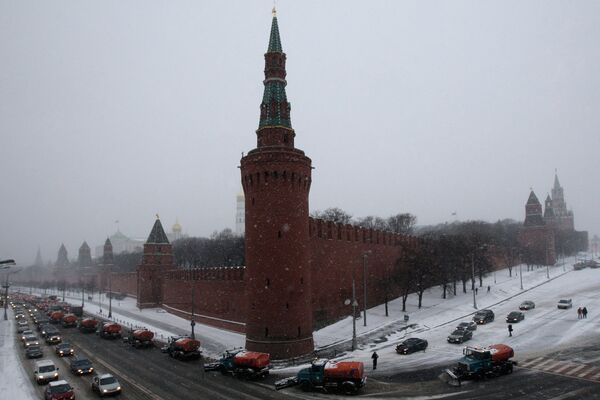Soviet-era Moscow authorities succeeded in reducing the amount of snow using aviation, a Russian scientist said amid public arguments that the practice should be renewed.
"About seven or eight airplanes were used. They were used over 10 years and managed to reduce the average seasonal amount of snow in Moscow by some 12%," Russian meteorological bureau's Bagrat Danelyan told RIA Novosti.
Moscow Mayor Yury Luzhkov suggested in August dispersing snow clouds to save the city up to 300 million rubles ($10.1 mln). The experiment was due to kick off in February.
However, First Deputy Mayor Pyotr Biryukov said on Thursday that the program would not go ahead until the authorities had obtained a feasibility study.
The program envisages the dispersal of clouds in winter to prevent snow from falling in the city center, which would theoretically lead to a reduction in budget expenditures on snow removal equipment and personnel, as well as relieving winter traffic in Moscow's already snarled streets.
Luzhkov's initiative has provoked criticism on the part of many Muscovites and a number of scientists.
The Moscow Region's Ecology Minister Alla Kachan expressed concern that dispersing snow clouds away from Moscow could affect the climate on the outskirts of the capital, where more precipitation would fall as a result.
Hundreds of people have been left stranded at airports or cut off in their own homes as heavy snow and freezing conditions continued to affect transportation across Europe earlier this week.
MOSCOW, January 14 (RIA Novosti)


